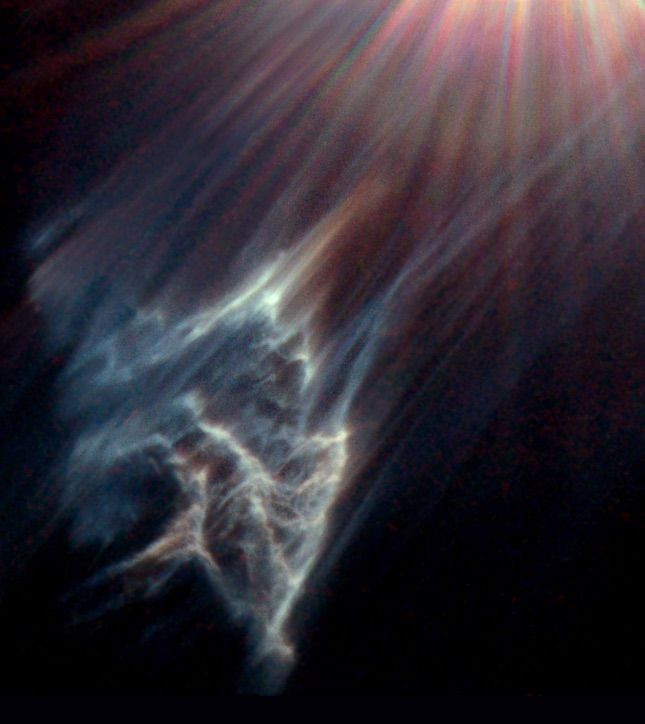NASA, ESA’s Hubble Snaps Stunning Photo Of Ghost Nebula

The Hubble Space Telescope, which is operated by NASA and the European Space Station (ESA), was able to capture a stunning photo of a nebula that looks like a floating ghost in space. According to the agencies, the unique appearance of the nebula was caused by a nearby star.
The subject of Hubble’s photo is IC 349, which is also known as Barnard’s Merope Nebula. It is located within the Pleiades Cluster and is about 3,500 astronomical units from the star Merope, which provides the light shining on the nebula in the image.
As a nebula, IC 349 is a large cloud filled with interstellar dust and gas. According to the ESA, the IC 349 is currently moving across the Pleiades Cluster at incredible speeds. As it passes near Merope, its cloud gets disrupted, causing it to appear faint. The ESA noted that this is what caused the nebula’s ghostly appearance.
“This ghostly image shows what can happen when an interstellar cloud passes too close to a star,” the ESA explained in a statement. “Barnard's Merope Nebula, also known as IC 349, is a cloud of interstellar gas and dust traveling through the Pleiades star cluster at a relative speed of 11 kilometers per second.”
“It is passing close to the star Merope, located 0.06 light-years away from the cloud, which is equivalent to about 3 500 times the distance between the Earth and the Sun,” the agency added. “This passage is disrupting the nebula and creating the wispy effect seen in the image.”
The ESA explained that as IC 349 passes near Merope, radiation from the star causes the dust particles within the cloud to separate.
“Astronomers believe that radiation pressure from the star is acting like a sieve to separate dust particles of different sizes,” the agency stated. “As the nebula approaches Merope, the starlight decelerates dust particles, but the small particles slow down more than the large particles.”
According to the space agency, the nebula will continue moving towards Merope within the next thousand years. If the nebula manages to survive its voyage, it will eventually fly past the star.
© Copyright IBTimes 2025. All rights reserved.




















